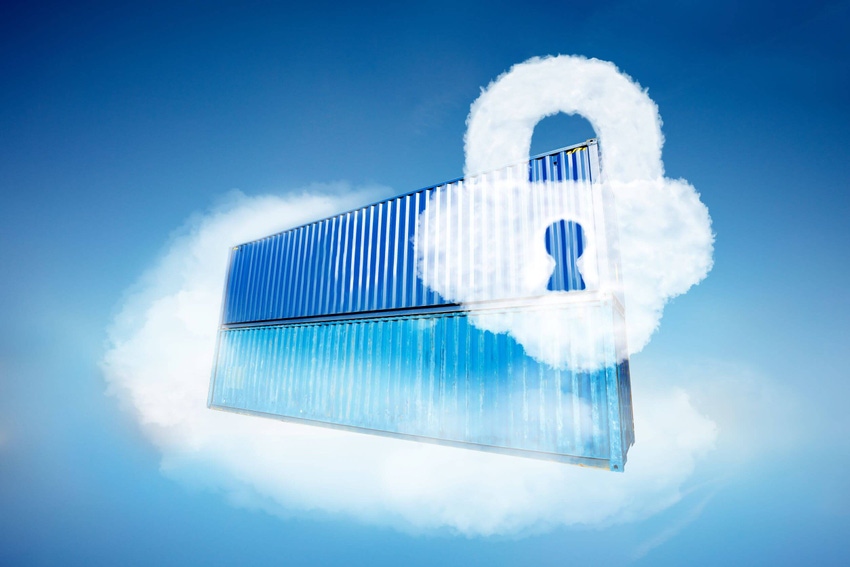
News, news analysis, and commentary on the latest trends in cybersecurity technology.
Security must be precise enough to meet compliance requirements without impeding DevOps and developer productivity. Here's how to strike that balance.

Businesses are moving fast to modernize application development, but Kubernetes security has taken a back seat in many cases. While that deprioritization is increasingly risky, security strategies to mitigate threats to containerized environments must tread a careful path.
On the one hand, security must be precise enough to meet the rigorous compliance requirements — and stand up to audits — across all regulations a given organization must adhere to, whether that's SOC 2, PCI DSS, GPDR, HIPAA, or others. At the same time, whatever security processes are put into place must still ensure that DevOps and developer productivity isn't impeded. It's a delicate balancing act that doesn't leave much room for error on either side.
To ensure continuous compliance in containerized environments without creating obstacles to productivity, adhere to these six practices.
1. Get Automated
Implementing the right tools — and there are many great fully open source options — delivers the real-time threat responses and always-on monitoring necessary for achieving continuous compliance. For example, automated vulnerability scanning and security policy as code should be integrated into the pipeline. Logs and events should be processed with an automated Kubernetes audit log analyzer. SIEM technologies powered by machine learning can quickly and automatically identify attack patterns. You should also leverage CIS benchmarks and custom compliance checks to inspect Kubernetes configurations continuously.
2. Secure Kubernetes Itself
It's become absolutely crucial to treat Kubernetes itself as an attack surface — because attackers certainly are. With the sophistication of threats maturing, continuous compliance now requires that the full stack behind your container environments is actively secured. This includes initiating automatic monitoring, hardening against exploits, performing configuration auditing, and preparing automated mitigation. That's not only true for Kubernetes but also any service meshes, hosting VMs, plugins, or other targets that may come under attack.
3. Seeing an Attack Is Preventing an Attack
Attack kill chains often begin with the launch of an unrecognized container network connection or process, which escalates its own level of access by writing or changing existing files or exploiting unprotected entry points. Such nefarious methods will then utilize network traffic to send captured data to an external IP address, resulting in a data breach. Kill chains may similarly target the Kubernetes API service for man-in-the-middle attacks and commonly perform zero-day, insider, and cryptomining attacks. Attacks leveraging the Apache Log4j exploit are also on the rise.
Strategies that incorporate data loss prevention (DLP) and Web application firewall (WAF) protection can provide the visibility required to detect active kill chains, as well as automated responses ready to put suspicious processes and traffic to a halt before they do harm. In fact, many regulatory compliance frameworks now specifically require organizations to have DLP and WAF capabilities in place to protect their container and Kubernetes environments, including PCI DSS, SOC 2, and GDPR. (HIPAA strongly suggests DLP as well.)
4. Zero in on Zero Trust
By implementing a zero-trust model, you're no longer reactively addressing threats recognized in log analysis or signature-based detections. Instead, a zero-trust strategy ensures you'll be blocking all attacks by allowing only approved processes and traffic to be active in your environments. The full cloud-native stack, along with access controls such as RBACs, must feature these zero-trust safeguards. The result is a more assured approach to achieving continuous compliance.
5. Take Advantage of Built-In Kubernetes Security
Built-in Kubernetes security features include log auditing, RBACs, and system log collection centralized by the Kubernetes API server. Leverage these available capabilities to collect and analyze all activity logs for evidence of attack or misconfigurations. Follow up by addressing any issues or run-time activities that fall short of compliance by implementing security patches or new policy-based protections.
In most cases, you'll want to go further and support existing Kubernetes security with tooling that enables container application security and continuous compliance auditing. The built-in Kubernetes Admission Controller should be used to closely coordinate Kubernetes with external registries and resource requests. This approach will more effectively prevent vulnerabilities and unauthorized behavior in application deployments.
6. Verify the Security of Your Cloud Host
Cloud platforms hosting Kubernetes handle their own systems and must ensure their continuous compliance. However, the stakes are too high not to check that those cloud-hosting practices are indeed well-secured and that they fulfill your own compliance responsibilities. In fact, the shared responsibility model offered by many cloud providers leaves the burden of securing application access, network behavior, and other assets in the cloud squarely on the customer.
Continuous Compliance in Real-Time Environments
Kubernetes and containerized environments are highly dynamic, with containers spinning in and out of existence far more rapidly than manual security checks can possibly safeguard. In addition, traditional security technologies, such as network segmentation and firewalling, required by many compliance regulations don't work in container networks.
Modern continuous development processes regularly introduce new code and containers as applications are built, shipped, and run in production environments. As a result, regulations require organizations to adopt automated real-time security and auditing measures that provide true continuous compliance.
About the Author(s)
You May Also Like
Securing Code in the Age of AI
April 24, 2024Beyond Spam Filters and Firewalls: Preventing Business Email Compromises in the Modern Enterprise
April 30, 2024Key Findings from the State of AppSec Report 2024
May 7, 2024Is AI Identifying Threats to Your Network?
May 14, 2024Where and Why Threat Intelligence Makes Sense for Your Enterprise Security Strategy
May 15, 2024
Black Hat USA - August 3-8 - Learn More
August 3, 2024Cybersecurity's Hottest New Technologies: What You Need To Know
March 21, 2024

